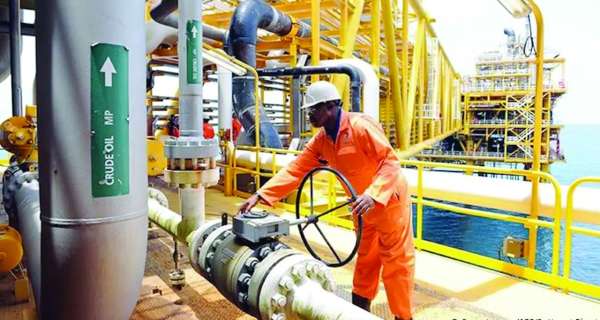Above the Atlantic, various aircraft and surveillance technologies are being deployed to search for the missing Titan submersible near the sunken wreck of the Titanic. How do they work?
Ever since the Titan submersible was confirmed lost in the Atlantic this week, planes have been combing the ocean to hunt for it beneath the waves.
On Wednesday, the US coastguard announced that a Canadian P-3 aircraft had identified unexplained underwater noises, apparently banging at half-hour intervals. The signal continues to be investigated and analysed, say officials.
How can aircraft flying high above the waves detect something so deep underwater?
Hunting for submersibles is traditionally the exclusive job of some of the largest and most technologically-advanced aircraft in any air force. Often based on civilian designs, these machines deploy a suite of impressive-sounding sensors to locate military submarines under the sea. It's usually a cat-and-mouse game between aircraft and submarines that want to stay hidden. That's not the case here.
The fact that these aerial hunters are packed with advanced new technology would seem to give them the advantage. Yet as the lost Titan sub shows, submersibles remain very difficult to find, especially at depths of 3.8km (12,400ft) where the wreck of the Titanic is found.
The four-engine turboprop P-3 Orion, which detected the mysterious banging noise on Wednesday, first entered service in 1962 and is based on the Lockheed Electra airliner.
The aircraft heard the noise after dropping sonar buoys, which drifted on the surface, listening for sounds that nature would be unlikely to make. It picked up a regular banging noise at 30-minute intervals, something that experts suggest are a sign they are being made by human beings.
"The fact the acoustic noises are 30 mins apart is a great sign," says Jamie Pringle, a reader in forensic geosciences at Keele University in the UK. "A surface ship propellor which would be continuous. Acoustic noise travels far in water, so that is both good and bad news. You would need (at least) three of those static buoys to be able to triangulate the sound source to get a position fix."
The Lockheed P-3 Orion is also equipped with magnetic anomaly detectors, which detect tiny disturbances in the Earth's magnetic field caused by metallic submarine hulls. If an aircraft equipped with the detectors flies over a large mass of metal within its detection range, then it will pick it up. The presence of a known wreckage of a large steel hulled vessel like the Titanic makes using this technique harder.
However, the P-3 is not the only aircraft involved in the search. Other planes scouring the Atlantic include the C-130 Hercules and the relatively new Boeing P-8 Poseidon, known as the most advanced maritime patrol craft in the world.
The Poseidon looks familiar because it is: the aircraft is derived from the Boeing 737 passenger plane. The Poseidon's range is much shorter than the P-3: 2,250 km (1,400 miles) compared to 9,000km (5,600 miles). However, it can fly 12,000ft (3,660m) higher, and faster too.
Rather like a game of Battleships, the Poseidon's aircrew uses a grid pattern to work out where a submersible is not, and then closes in on where it might be. It does this by deploying one of the most effective ways of tracking a submarine: sonobuoy fields. Fired from a rotary launcher at a high altitude, air parachuted Multistatic Active Coherent (Mac) buoys generate multiple sonar pulses over time in order to last longer and extend their search range. The arrangement of buoys like these is the one of the most classified secrets of anti-submarine warfare. A single P-8 can deploy over 120 buoys.
Along with these buoys, the Poseidon uses a whole suite of technology that includes its own acoustic sensor, synthetic aperture radar (Sar) to detect, classify and track surfaced submersibles and detect periscopes a long way off, an electro-optical/infrared turret that can identify submersible exhaust, Electronic Support Measure (ESM) as an electromagnetic sensor, particularly useful in tracking the positions of radar emitters, and even a hydrocarbon tracking system to "sniff" the presence of diesel electric military submarines.
However, the Poseidon flies too high to use magnetic anomaly detection effectively, and instead UAVs (Unmanned Aerial Vehicles) equipped with these detectors are being developed to launch from its sonobuoy tubes.
What hasn't changed, for even the most cutting-edge aircraft, is reliance on old-fashioned intelligence. "To be most effective, the P-8 needs first to have a rough sense of the location and direction of the submarine to find it," says Sidharth Kaushal, a research fellow at the UK defence and security think tank, the Royal United Services Institute (RUSI).
In a military search, this "rough sense" relies on intelligence gathered from signals, satellite imagery, interpersonal contact, and ever-growing networks of hydrophones placed on the ocean floor, often at "choke points", to detect when submersibles pass over them. But in the case of the lost Titan sub, such hints are few and far between.
What we know about the missing Titanic sub
Perhaps one of the Poseidon's most important capabilities – and one that distinguishes it from the Orion – is the ability to work as a communications hub, a "node" as it were, at the centre of a network of ships, sensor-equipped UAVs, and Uncrewed Surface Vessels (USV) that will in effect multiply its power.
This networked power has made some analysts think that the arrival of aircraft like the Poseidon is ushering an era when the sea becomes "transparent", and that submarines will find it impossible to hide.
But while the Orion's and now the Poseidon's technologies and capabilities make it sound like they have the upper hand, they have their limitations.
Sonar pulses, for example, can face interference from different temperature and salinity layers in the water. A submersible can be hidden under these. Magnetic detection technology tends to have short range – detecting only submersibles that are close to the surface and near to the aircraft's position. And submersibles can also avoid detection by staying hidden in the "ambient water noise" of the ocean.
The P-8 may be the most advanced sub-hunter in the world. But as independent defence analyst H I Sutton told the BBC, "systems like Poseidon will still need to know where to look".
In truth, finding a submersible can also be a question of luck. After all, it was the 60-year-old P-3 Orion that detected the bangs that may be coming from the lost Titan.




































0 Comments